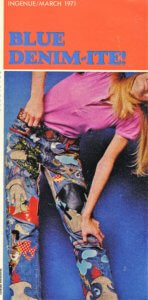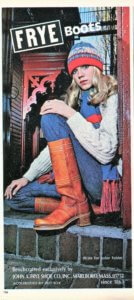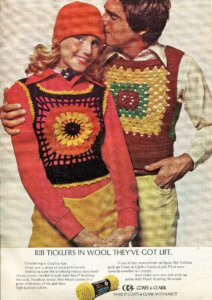The March 1971 issue of Ingenue magazine featured this incredible pair of decorated blue jeans. These one-of-a-kind jeans were created by Linda Sampson, a young New Yorker who designed and created in her spare time. She took a pair of well-aged dungarees, covered them with a fairy-tale fantasy of applique and embroidery and turned them into a work of art. Reaction to these decorated jeans was so positive that Linda took them to a well-know New York boutique. They immediately ordered a pair to sell at $250! (That would convert to $1,575.04 in today’s buying power.)
Decorating denim jeans was a groovy DIY crafting trend in the late 60s/early 70s. I remember embroidering my Levis jeans with daisies and peace signs. I also sewed an inset of colorful fabric at outside seam hem. My only regret was that I DID NOT SAVE MY JEANS. They would probably be worth a fortune now. Live and learn!
~Marilyn







 I'm Marilyn, and I'm obsessed with vintage clothing, thrift stores, clotheslines, and Chanel. Welcome to my down-to-earth world!
I'm Marilyn, and I'm obsessed with vintage clothing, thrift stores, clotheslines, and Chanel. Welcome to my down-to-earth world!